agricultural irrigation polyethylene pipe
The technique of providing water to crops for their optimum growth and productivity is known as agricultural irrigation. Polyethylene pipes are rapidly being used in agricultural irrigation because of their dependability, adaptability, and affordability. This article will give a general overview of polyethylene pipes' history and development, the different types of polyethylene pipes used in agricultural irrigation, and the benefits of doing so.
Polyethylene Pipe Development across Time
From its initial introduction in the 1950s, polyethylene pipes have experienced substantial design and manufacturing process advances. Polyethylene pipes were first predominantly employed in the natural gas business, but their use has now spread to other sectors, such as irrigation in agriculture.
As technology has advanced over time, tougher and greater density polyethylene pipes have been created, which makes them perfect for usage in abrasive agricultural conditions. Moreover, the performance of polyethylene pipes has been improved by the addition of chemicals such antioxidants, ultraviolet stabilizers, and anti-static agents.
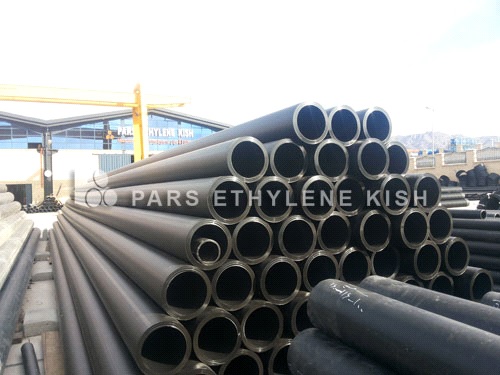
agricultural irrigation types of polyethylene pipe
Several different polyethylene pipe types, including high-density polyethylene (HDPE) and low-density polyethylene (LDPE) pipes, are employed in agricultural irrigation.
High-density polyethylene (HDPE) pipes are renowned for their strength, sturdiness, and resistance to UV radiation, chemicals, and abrasion. Due to their capacity to tolerate high pressures and flow rates, they are frequently utilized in extensive agricultural irrigation systems.
Conversely, LDPE pipes are more adaptable and frequently used in low-pressure irrigation systems. They are also employed in drip irrigation systems since they can deliver water to plants gradually and steadily.
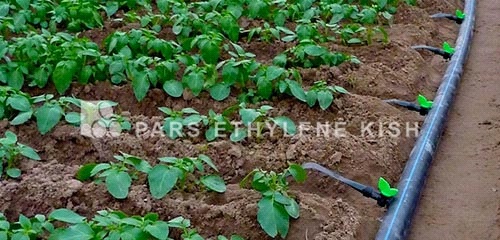
Advantages of Using Polyethylene Pipe in Agricultural Irrigation
Polyethylene pipes have a number of benefits over conventional irrigation techniques when used for agricultural irrigation.
First of all, polyethylene pipes are extremely strong and resistant to UV radiation, chemicals, and inclement weather. As a result, they require less upkeep and last longer than conventional irrigation materials like PVC or metal pipes.
The second benefit of polyethylene pipes is that they are lightweight and flexible, making them simple to transport and install. In order to meet the land's curves, they can also be easily bent and curled, which eliminates the need for extra fittings and connectors.
Thirdly, the smooth inside surface of polyethylene pipes decreases friction and pressure loss, improving water flow efficiency and lowering energy costs.
Last but not least, polyethylene pipes are economical and environmentally safe. Compared to conventional irrigation materials, they need fewer resources to make and transport them, and they may be recycled once their useful lives are over.
Conclusion
In conclusion, polyethylene pipes are widely used in agricultural irrigation because of their strength, adaptability, and affordability. The two primary varieties of polyethylene pipes used in agricultural irrigation are HDPE and LDPE pipes, and they have a number of benefits over conventional irrigation materials. Farmers can increase the effectiveness of their irrigation systems while lessening their environmental impact by employing polyethylene pipes.
Challenges of Using Polyethylene Pipe in Agricultural Irrigation
The vulnerability of polyethylene pipes to ultraviolet (UV) radiation degradation is one of the issues with using them for irrigation in agriculture. UV rays can degrade the pipe's composition, which can result in cracks, leaks, and ultimately pipe failure. UV stabilizers are added by manufacturers to the pipe material during the production process to address this issue.
The low resistance of polyethylene pipes to impact damage presents another difficulty. As a result, earth detritus such as pebbles, roots, and other objects can harm the pipes. To lessen this kind of damage, the pipes should be installed beneath the plow layer.
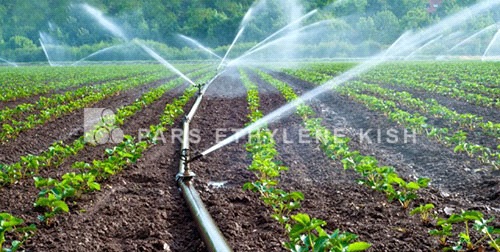
Installation and Maintenance of Agricultural Irrigation Polyethylene Pipe
Polyethylene pipe installation in agricultural irrigation systems is comparatively simple and just requires a few simple tools. Heat fusion is used to fuse the pipes, making for a solid, long-lasting connection. It is crucial to adhere to the manufacturer's installation instructions and use the recommended fittings and accessories if you want to make sure the pipes last a long time.
Pipes made of polyethylene require less maintenance. To find any indications of damage or leakage, regular inspections should be performed. In order to protect the pipe and the nearby crops from additional harm, any damage should be fixed right away.
Cost Analysis of Polyethylene Pipe for Agricultural Irrigation
One of the most economical solutions for agricultural irrigation systems is polyethylene pipe. The pipes are inexpensive, simple to install, and low maintenance. The size, wall thickness, and pressure rating of polyethylene pipes all affect their price. They do, however, typically cost less than other pipe materials like PVC or metal.
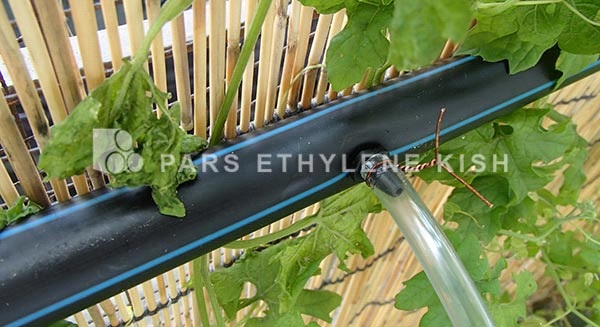
Environmental Impact of Agricultural Irrigation Polyethylene Pipe
Compared to other pipe materials, polyethylene pipes have the least negative environmental effects. The pipes need less energy to produce than conventional pipe materials because they are manufactured from recyclable materials. In addition to being non-toxic, polyethylene pipes do not leak damaging substances into the ground or water.
Comparison with Other Irrigation Pipe Materials
Compared to other types of irrigation pipe materials, polyethylene pipes have a number of benefits. They are perfect for use in agricultural irrigation systems since they are lightweight, flexible, and simple to install. They also have a low coefficient of friction, which cuts down on the energy needed to pump water. Also, compared to other pipe materials, polyethylene pipes last longer, lowering the frequency of replacement.
Future of Agricultural Irrigation Polyethylene Pipe
Agriculture irrigation polyethylene pipe appears to have a bright future. Manufacturers are creating new polyethylene pipe formulations that are even more resilient and resistant to UV radiation and impact damage as technology develops. The development of new polyethylene pipe materials that are even more environmentally beneficial is also being driven by the rising demand for sustainable and environmentally friendly goods.
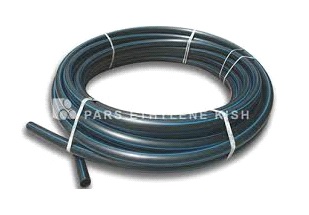
Conclusion
Agricultural irrigation systems frequently use polyethylene pipes because of its inexpensive cost, simplicity of installation, and durability. They do, however, face several difficulties, including as UV radiation sensitivity and impact damage. Frequent inspections and upkeep might aid in avoiding these problems. When compared to alternative pipe materials, polyethylene pipes have a low environmental impact and are a sensible choice financially.